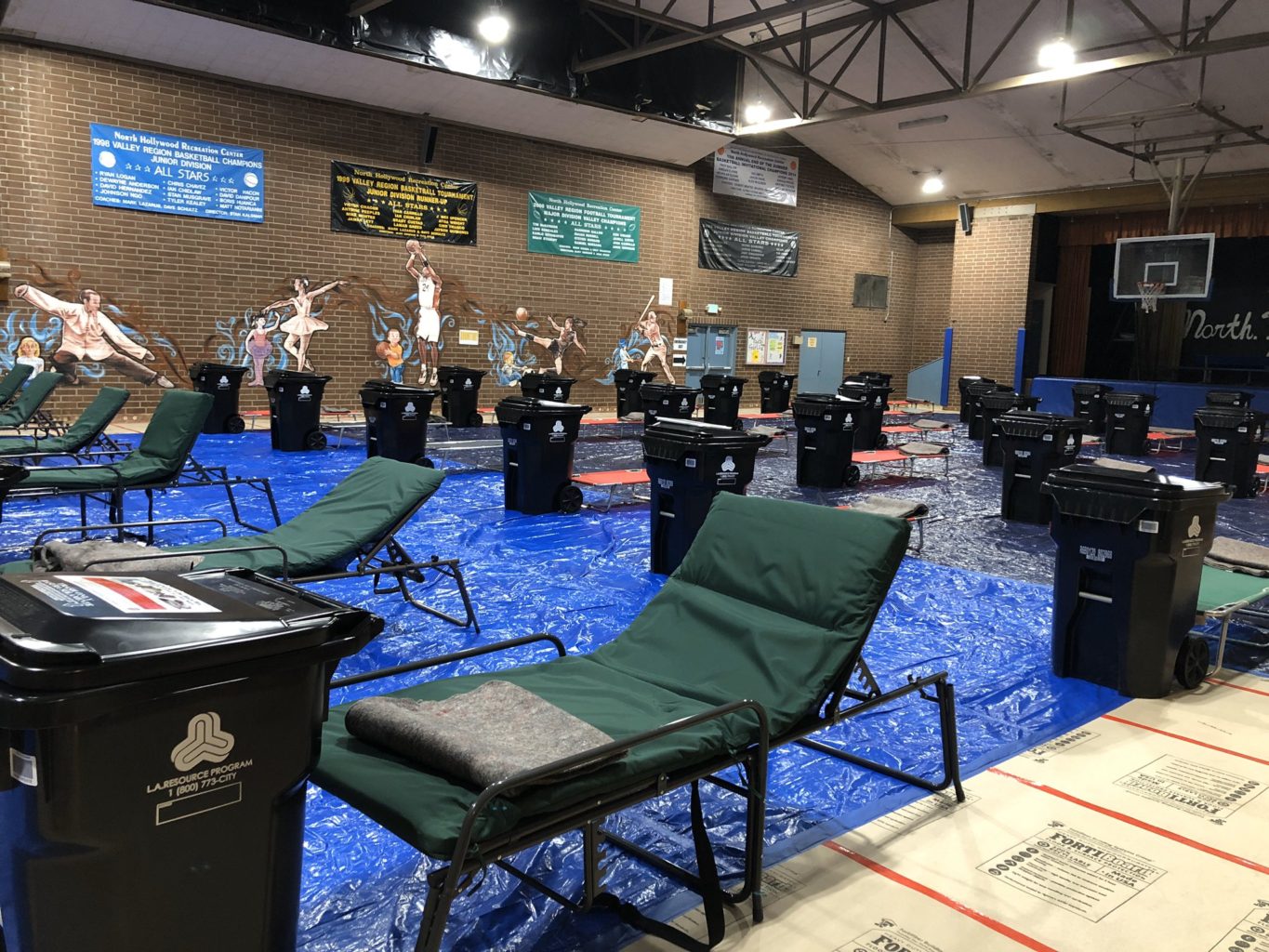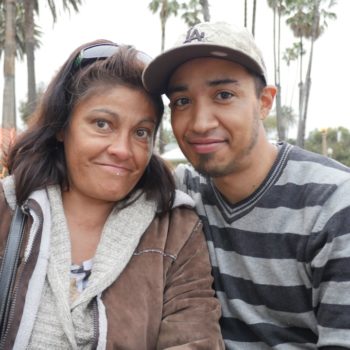As governments scramble to address the COVID-19 coronavirus pandemic, thousands of unhoused people are at risk of being exposed. Finding shelter to socially distance one’s self from others is difficult on the streets. To address this issue, the City of Los Angeles is converting 42 of its recreation centers into shelters to house 6,000 people. It is also amending some city policies to better protect homeless people.
On March 22, the Centers for Disease Control offered guidelines to help protect unhoused individuals. The CDC called for handwashing and hygiene facilities to remain open and well-stocked for homeless people to use. It also advised that local authorities do not displace encampments, as that could endanger people living there. But some advocates worry that disruptive cleanings, also known as sweeps, are continuing.
It is not a clear-cut distinction. In issuing the advisory on shelters and encampments, the CDC said that public health depends on how local authorities implement policies.
“Outdoor settings may allow people to increase distance between themselves and others. However, sleeping outdoors often does not provide protection from the environment, quick access to hygiene and sanitation facilities, or connection to healthcare,” the CDC notes. “The balance of risks should be considered for each individual experiencing unsheltered homelessness.”
Tents Can Remain Up
Speaking at a daily briefing on March 23, Los Angeles Mayor Eric Garcetti was asked if the shelter measures comply with the CDC’s suggestions. He said policies and guidelines are “evolving.”
“They’re talking about cities that might say ‘clear out encampments’ without a place to go,” Garcetti said. “They’re not saying don’t do shelters. Use shelters with these guidelines, but don’t clear people out because doing that could actually spread things if you’re not having a place for them to go.”
In addition to working on moving people into the closed recreation centers, Los Angeles is altering some policies to avoid displacing people during the day.
On March 17, the Los Angeles City Council voted unanimously to amend city ordinance 56.11. This allows homeless individuals’ tents to remain up during the day time. At the meeting, Heidi Marston said it would be “not optimal” for the public health to have people dismantle and move tents. Marston is the interim director of the Los Angeles Homeless Services Authority, the joint county-city agency in charge of homelessness response.
Hotel Vouchers Would Better Protect People
Some advocates disagree with the city’s approach on moving people into shelters, particularly in light of the CDC’s comments. According to Eve Garrow, putting hundreds of people in close quarters risks people quickly getting sick. Garrow is a homelessness policy analyst with the ACLU of Southern California.
“Even if their sleeping spots are six feet apart, it forces people to share restrooms and common eating spaces,” Garrow said. “Because mass testing for the virus isn’t available, they are almost certain to admit people who are contagious, putting healthy people at high risk of infection.”
Instead, Garrow said the best approach is for the city and state to offer hotel and motel vouchers. This would allow homeless individuals to be in spaces where they can safely self-isolate.
More Handwashing Stations and Hygiene Resources Are Needed
Federal health officials also advised that municipalities should provide additional sanitation and hygiene resources to encampments.
In the first part of March, the Los Angeles City Council took action to do so. After approving a motion from Councilmembers Mitch O’Farrell and Monica Rodriguez, the city is the process of setting up 250 handwashing stations near encampments around Los Angeles. However, some stations are out of water and are not being refilled quickly enough.
Jane Nguyen, co-founder of KTown for All, said that the city’s effort has been “pretty incomplete.” There are not enough handwashing stations for all of the encampments in Los Angeles. KTown for All is a homeless advocacy group that is also part of the activist coalition Services Not Sweeps.
Cancel Sweeps
Services Not Sweeps is calling for a cancellation of all sweeps and better support for hygiene facilities. The coalition put forward a list of demands prior to city action. The group called for an end to sweeps, the daytime “tents down” rule in 56.11, and the expansion and installation of handwashing stations, showers and other hygiene equipment at every encampment.
Although the City Council allowed tents to stay up during the day, the city is still doing its street cleanings, which homeless advocates say are disruptive and destructive for homeless individuals. Nguyen said that it appears to be on a case-by-case basis.
In addition, the Council did not amend the part of 56.11 that limits the amount of items homeless people can have with them on sidewalks and public right of ways. This means “excess” belongings can still be taken by authorities.
Nguyen acknowledged that guidelines and actions are changing every day. She said that it seems that City Council offices are still reacting to what the CDC put forward.
A spokesperson for Los Angeles’ Bureau of Sanitation said that LASAN continues to do homeless encampment cleanings every day. Nguyen said LASAN appears to be doing spot cleanings, since tents can stay up, which is a good move.
Focus on Educating People on How to Protect Themselves
The city’s Cleaning and Rapid Engagement (or CARE) teams are also tasked with confiscating items exceeding limits of 56.11. However, the agency said the focus is now on informing homeless people about the virus and how to protect themselves.
“All our teams are now prioritizing [COVID-19] education and response, including our CARE and CARE+ teams,” a LAHSA spokesperson told Invisible People. “Many CARE and CARE+ operations will continue having LAHSA support for [COVID-19] education, but not necessarily every operation.”
The outbreak comes as Los Angeles deals with a growing homeless population. LAHSA’s 2019 homeless count increased 16 percent from the previous year with approximately 36,000 unhoused people in the city. The 2020 count was conducted in January, but the results are not expected until later this year.
As the outbreak spreads, Skid Row shelters and service providers work to better protect residents. The Midnight Mission installed more handwashing stations. It also set up informational flyers around the facility, while advising shelter residents to avoid going out for non-essential reasons. Nearby, Union Rescue Mission turned its gymnasium into a space to isolate and care for potentially ill people. The gymnasium is usually filled with mattresses at night for overflow housing.
Find more information on the COVID-19 outbreak and impact here.













